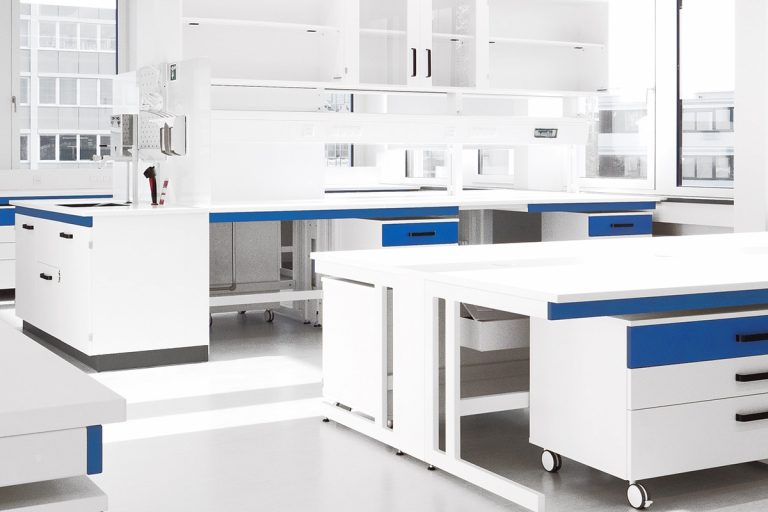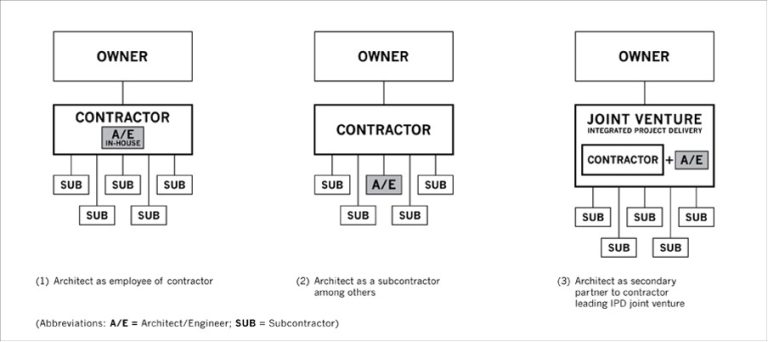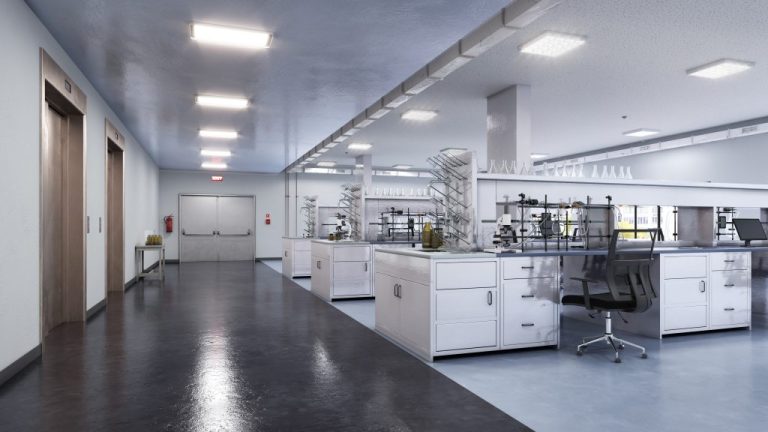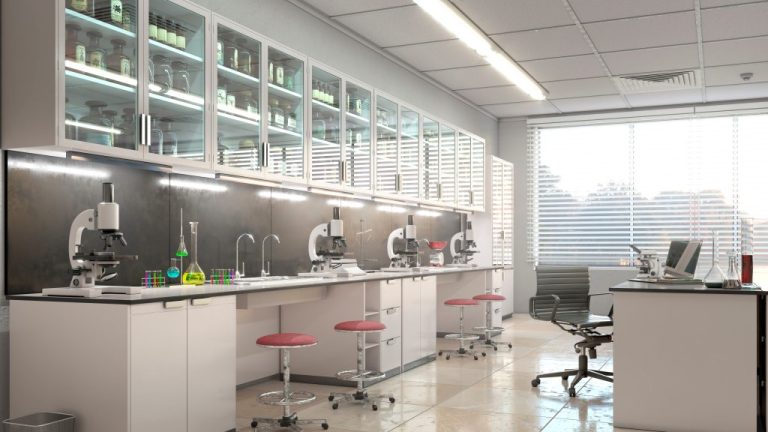Hvad er de forskellige typer af laboratorier, og hvordan ved jeg, hvilken der er den rigtige for min organisation?
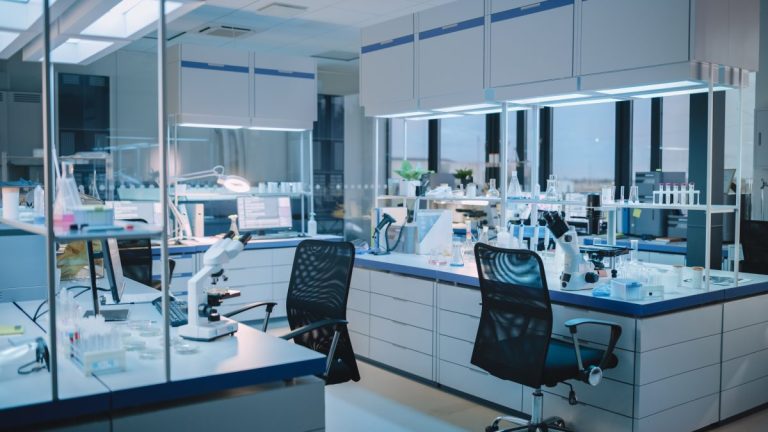
Der findes adskillige typer laboratorier, og en måde at klassificere dem på er gennem den type arbejde, der udføres i dem. Et laboratorie bør altid designes, planlægges og bygges i henhold arbejdets karakter.
Nogle gange er den forskning, der udføres i laboratorier, så omfattende, at den skal opdeles i flere faser og forskellige typer laboratorier og dermed personale. Nogle forskningseksperimenter kan eksempelvis begynde i et forsknings- og udviklingslaboratorium (F&U) og ende i et biosikkerhedslaboratorium.
I denne artikel vil vi forklare de forskellige typer laboratorier og komme ind på, hvorfor det er vigtigt at overveje, hvilken type laboratorium du skal bygge allerede i designfasen.
Forsknings- og udviklingslaboratorier (F&U)
F&U-laboratorier er i mange tilfælde rygraden i en virksomhed. De udfører forskning og udvikling af nye processer eller produkter, hvilket betyder, at mange processer begynder i denne type laboratorier.
Et F&U-laboratorium er et anlæg eller et specielt designet område, der bruges til forskning, udvikling og testaktivitet F&U-laboratorier ses i næsten enhver industri. Afhængigt af de produkter, der forskes i og som udvikles, kan F&U-laboratoriet variere i design og inventar Det afhænger helt af de enkelte organisationers behov.
F&U er en meget bred definition af et anlæg, hvis primære formål er at udføre forskning og udvikling i nye processer eller produkter. Dette kan være akademisk, teknologisk, farmaceutisk eller en hvilken som helst industri, hvor der er behov for nye processer og produkter.
Medicinske eller kliniske laboratorier
Medicinske/kliniske laboratorier er sundhedsfaciliteter, der tilbyder en bred vifte af laboratorieprocedurer, som hjælper læger med at udføre diagnoser og behandling af patienter. Disse typer laboratorier er ofte placeret inden for eller tæt på hospitalsfaciliteter, da forskningen i disse laboratorier ofte er bestilt af de læger, der arbejder på hospitalet.
Der er mange grene inden for medicinsk og klinisk forskning, og derfor varierer den type arbejde, der udføres (og dermed indretningen af rummet) i disse laboratorier meget. Listen nedenfor viser, hvor mange forskellige forskningsgrene der udføres inden for dette felt (og listen er ikke komplet, da der er en konstant udvikling inden for forskningsfeltet):
- Blodbank og serologi
- Klinisk kemi
- Hæmatologi
- Folkesundhed – leverer tests såsom vandanalyse, test for miljømæssige stoffer og andre test vedrørende folke- og miljøsundhed
- Klinisk mikroskopi
- Klinisk mikrobiologi
- Molekylærbiologi

Biosikkerhedslaboratorier
Biosikkerhedslaboratorier bruges til at studere smitsomme materialer på en sikker og effektiv måde. Disse er højt specialiserede laboratorier designet til ikke kun at beskytte laboratoriepersonalet mod forurening, men også at forhindre mikroorganismer i at trænge ind i miljøet.
At designe et biosikkerhedslaboratorium er en omfattende sag, der kræver tæt planlægning af ventilation og udsugning for at garantere et sikkert laboratorium.
Kemilaboratorier
Kemilaboratorier beskæftiger sig med studiet af stoffer. Kemi-laboratorier bruges til mange typer forsøg, men et generelt eksempel er, når stoffer (der ikke forekommer i naturen) produceres, eller stoffer, der kan renses eller er udvundet fra noget andet, indgår i forskningen.
Kemilaboratorier beskæftiger sig med opløsningsmidler, syrer og andre væsker, og disse laboratorier udgør derfor potentielle farer for personalet, der håndterer dem. Derfor er det vigtigt at designe laboratoriet med korrekt udsugning og opbevaring.
Fysiklaboratorier
Fysiklaboratorier er hvor teori og anvendelse testes inden for forskellige discipliner. Du husker måske fysiklaboratoriet fra din skoletid – formålet med denne type laboratorium er at give eleverne mulighed for at lære fysikteorier og -anvendelse på en uddybende måde. I højere studier til arbejdsmarkedet er formålet med et fysiklaboratorium at udføre forskning og undersøgelser, der er relevante for den videnskabelige industri.
Fysiklaboratorier kan omfatte udstyr som:
- Magneter
- Penduler
- Varmelamper
- Mikroskoper
- Elektromagneter
- Voltammeter
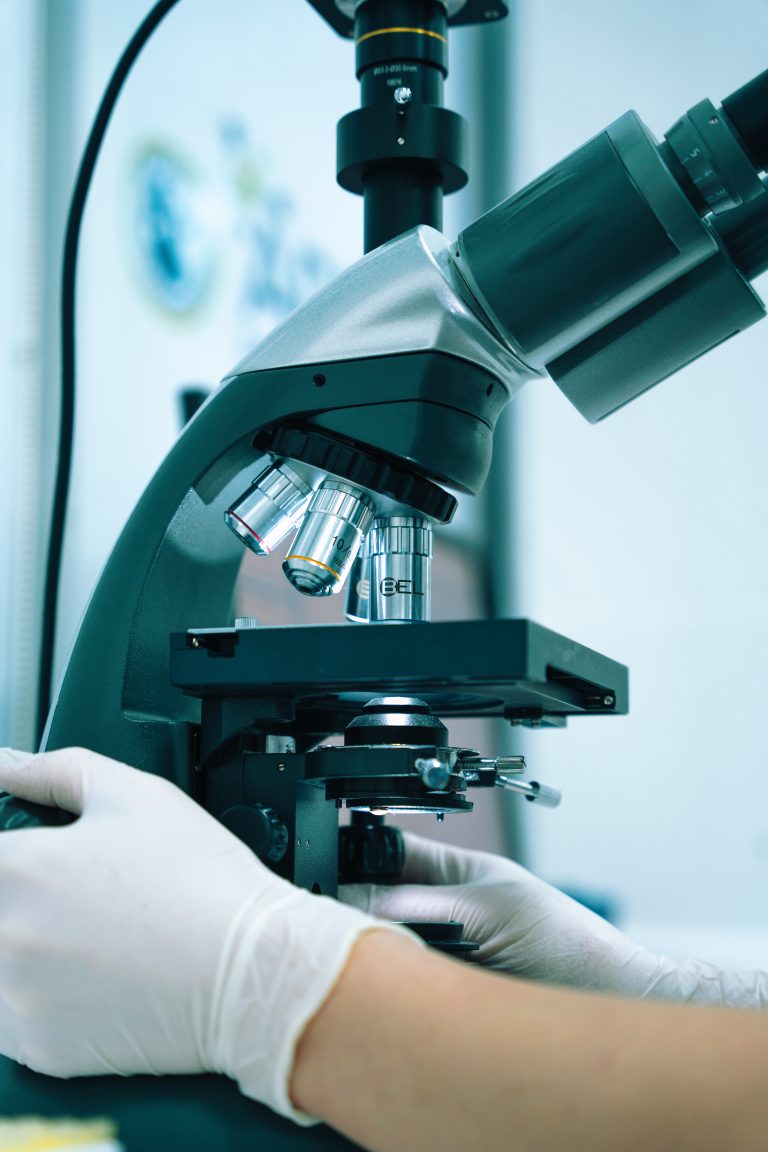
Biologiske laboratorier
Generelt er et biologisk laboratorium et rum, hvor der udføres biologiske undersøgelser, analyser og eksperimenter. Biologiske laboratorier undersøger alt i verden, der er biologisk, hvilket betyder, at al forskning inden for dyreområdet eller forskning, der arbejder med kilden til liv, adfærd og interaktion mellem levende ting, udføres i biologiske laboratorier.
Hvordan ved jeg, hvilket laboratorium jeg skal bygge?
Når du vælger et laboratoriedesign, er det afgørende at vide, hvilke typer eksperimenter og forskning der vil blive udført. Laboratoriets layout, ventilation og inventar vil afhænge af arbejdet i laboratoriet. Derfor er det vigtigt at inddrage alle interessenter tidligt i laboratorieplanlægningen. Read more about that here.
Listen over forskellige laboratorier viser ikke kun, at der er mange forskellige felter for laboratorieforsøg, men angiver også en udfordring, når man skal vælge den rigtige laboratorietype, da de har ligheder.
The important thing is to design a lab that is effective and safe for your organization’s specific needs. Often it is necessary to plan for flexible use, so the laboratory offers different options which also gives the organization the opportunity to grow and evolve in the same laboratory.
How do I decide how to design my future laboratory?
Let us worry about the design and built of your future laboratory. We’ll include all relevant stakeholders in the process to ensure that your future laboratory is fitting for your organization’s exact needs and experiments.
We would love to hear about your laboratory project. Fill out our contact form and we’ll get back to you shortly to discuss what type of laboratory you need and how we can help you.


